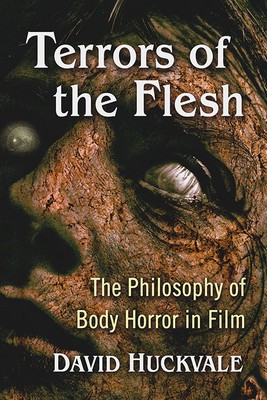
- We will send in 10–14 business days.
- Author: David Huckvale
- Publisher: McFarland & Company
- Year: 2020
- Pages: 196
- ISBN-10: 1476682186
- ISBN-13: 9781476682181
- Format: 15 x 21.8 x 1.5 cm, softcover
- Language: English
- SAVE -10% with code: EXTRA
Reviews
Description
The horror and psychological denial of our mortality, along with the corruptibility of our flesh, are persistent themes in drama. Body horror films have intensified these themes in increasingly graphic terms. The aesthetic of body horror has its origins in the ideas of the Marquis de Sade and the existential philosophies of Arthur Schopenhauer and Friedrich Nietzsche, all of whom demonstrated that we have just cause to be anxious about our physical reality and its existence in the world. This book examines the relationship between these writers and the various manifestations of body horror in film. The most characteristic examples of this genre are those directed by David Cronenberg, but body horror as a whole includes many variations on the theme by other figures, whose work is charted here through eight categories: copulation, generation, digestion, mutilation, infection, mutation, disintegration and extinction.
EXTRA 10 % discount with code: EXTRA
The promotion ends in 20d.17:08:33
The discount code is valid when purchasing from 10 €. Discounts do not stack.
- Author: David Huckvale
- Publisher: McFarland & Company
- Year: 2020
- Pages: 196
- ISBN-10: 1476682186
- ISBN-13: 9781476682181
- Format: 15 x 21.8 x 1.5 cm, softcover
- Language: English English
The horror and psychological denial of our mortality, along with the corruptibility of our flesh, are persistent themes in drama. Body horror films have intensified these themes in increasingly graphic terms. The aesthetic of body horror has its origins in the ideas of the Marquis de Sade and the existential philosophies of Arthur Schopenhauer and Friedrich Nietzsche, all of whom demonstrated that we have just cause to be anxious about our physical reality and its existence in the world. This book examines the relationship between these writers and the various manifestations of body horror in film. The most characteristic examples of this genre are those directed by David Cronenberg, but body horror as a whole includes many variations on the theme by other figures, whose work is charted here through eight categories: copulation, generation, digestion, mutilation, infection, mutation, disintegration and extinction.


Reviews